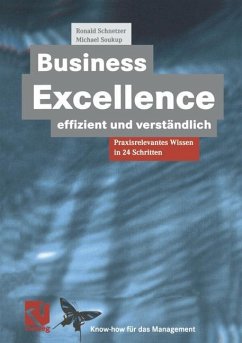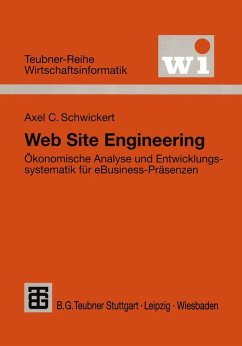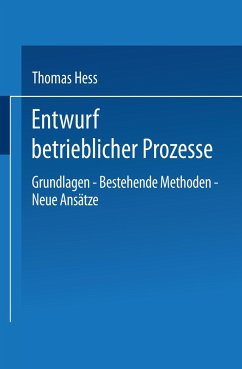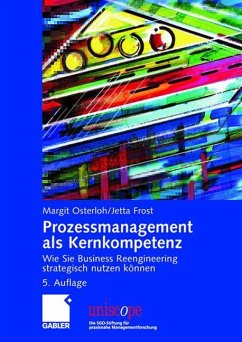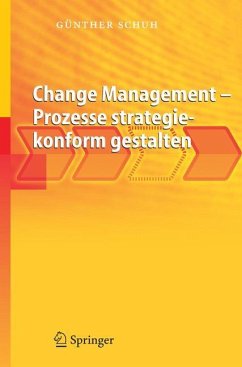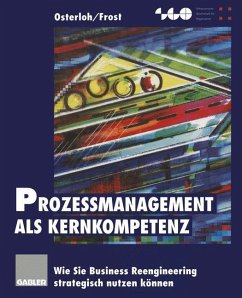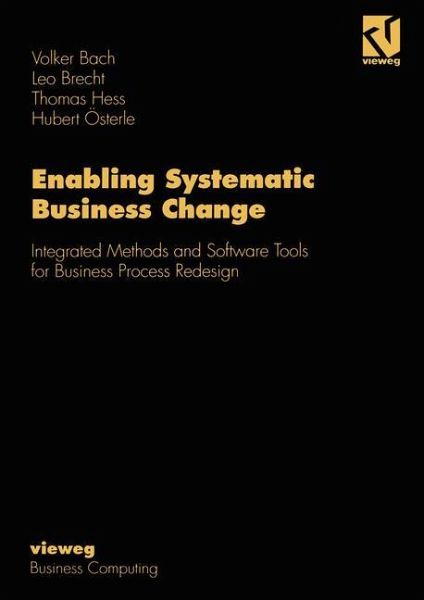
Enabling Systematic Business Change
Integrated Methods and Software Tools for Business Process Redesign
Mitarbeit: Bach, Volker; Brecht, Leo; Hess, Thomas

PAYBACK Punkte
0 °P sammeln!
Business Process RedesignAn increasing number of companies regard Business Process Redesign (BPR) as a significant means of improving their competitive position. The initial euphoria is being superseded by a more pragmatic assessment. This book demonstrates how a systematic, practical yet creative procedure can lead to more reliably successful BPR projects. Case studies and investigations support the superiority of a systematic, method-based approach as opposed to an "intuitive" one. Consequently, before the start of a project a method must be selected which corresponds to the strategic goals ...
Business Process Redesign
An increasing number of companies regard Business Process Redesign (BPR) as a significant means of improving their competitive position. The initial euphoria is being superseded by a more pragmatic assessment. This book demonstrates how a systematic, practical yet creative procedure can lead to more reliably successful BPR projects. Case studies and investigations support the superiority of a systematic, method-based approach as opposed to an "intuitive" one. Consequently, before the start of a project a method must be selected which corresponds to the strategic goals of the project and is suited to the company environment. This book formulates the central principles and criteria for this, which are derived from practical experience. A procedural model and checklists help the reader to define what he requires from the method. From these criteria are then derived suitable BPR tools. Of particular importance here is the underlying cost-benefit analysis. T he book describes over a dozen BPR methods and as many tools within a uniform framework. This ensures comparability and allows correlation with project-specific requirements. Particular attention is paid to method-tool combinations that are designed for combined use.
An increasing number of companies regard Business Process Redesign (BPR) as a significant means of improving their competitive position. The initial euphoria is being superseded by a more pragmatic assessment. This book demonstrates how a systematic, practical yet creative procedure can lead to more reliably successful BPR projects. Case studies and investigations support the superiority of a systematic, method-based approach as opposed to an "intuitive" one. Consequently, before the start of a project a method must be selected which corresponds to the strategic goals of the project and is suited to the company environment. This book formulates the central principles and criteria for this, which are derived from practical experience. A procedural model and checklists help the reader to define what he requires from the method. From these criteria are then derived suitable BPR tools. Of particular importance here is the underlying cost-benefit analysis. T he book describes over a dozen BPR methods and as many tools within a uniform framework. This ensures comparability and allows correlation with project-specific requirements. Particular attention is paid to method-tool combinations that are designed for combined use.



